Higher classification Chenonetta Rank Species | Scientific name Chenonetta jubata Phylum Chordata | |
 | ||
Genus ChenonettaBrandt, 1836 Similar | ||
Australian wood ducks using a nest box
The Australian wood duck, maned duck or maned goose (Chenonetta jubata) is a dabbling duck found throughout much of Australia. It is the only living species in the genus Chenonetta. Traditionally placed in the subfamily Anatinae (dabbling ducks), it might belong to the subfamily Tadorninae (shelducks); the ringed teal may be its closest living relative.
Contents
- Australian wood ducks using a nest box
- Taxonomy
- Description
- Distribution and habitat
- Call
- Protection
- Reproduction
- Breeding
- Feeding
- Similar species
- References
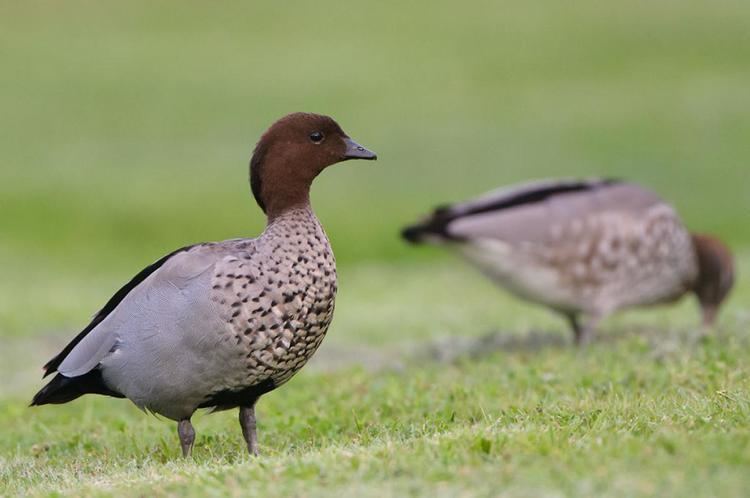
Taxonomy
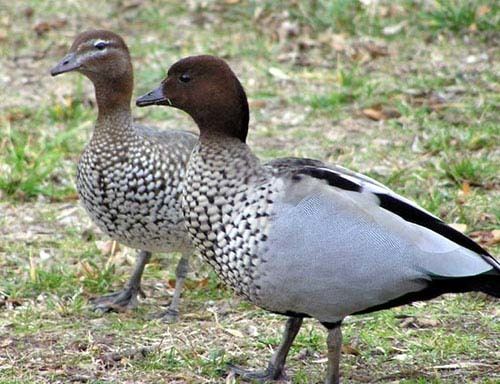
The Australian wood duck was first described by the English ornithologist John Latham in 1801 under the binomial name Anas jubata.
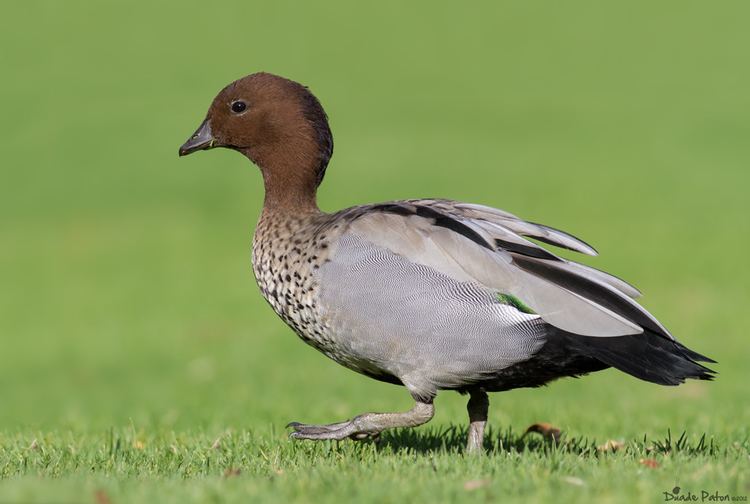
The flightless New Zealand species Chenonetta finschi (Finsch's duck) which was formerly believed to constitute a monotypic genus (Euryanas) has been determined to belong to Chenonetta. It became extinct before scientists could properly survey the New Zealand avifauna, but possibly as late as 1870 (based on a report of a flightless goose caught in Opotiki.)
Description
This 45–51 cm duck looks like a small goose, and feeds mostly by grazing in flocks.
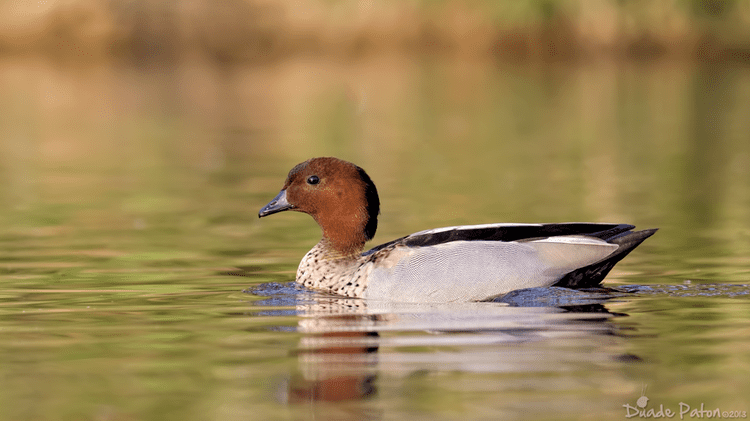
The male is grey with a dark brown head and mottled breast. The female has white stripes above and below the eye and mottled underparts. Both sexes have grey wings with black primaries and a white speculum. Juveniles are similar to adult females, but lighter and with a more streaky breast.
Distribution and habitat
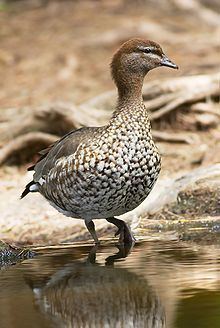
The Australian wood duck is widespread in Australia, including Tasmania. The Australian wood duck is found in grasslands, open woodlands, wetlands, flooded pastures and along the coast in inlets and bays. It is also common on farmland with dams, as well as around rice fields, sewage ponds and in urban parks. It will often be found around deeper lakes that may be unsuitable for other waterbirds' foraging, as it prefers to forage on land.
Call
The most common call is a loud, rising croaky gnow sound by the females, and the male call is the same except smoother, shorter and higher than the females. Staccato chattering is also present in flocks.
Protection
Australian wood duck is widespread in its range. This species has benefited from agriculture developments, with creation of dams and pools. It is classified as a game bird, and killed by licensed hunters. This species is not threatened, and numbers are stable.
Reproduction
Australian wood duck nests in cavities in trees or in nest-boxes above or near water. Nests are made with a pile of down.
Breeding
This duck nests in a tree cavity laying 9–11 cream-white eggs, similar to the Mandarin ducks. The female incubates them while the male stands guard. Once the ducklings are ready to leave the nest, the female flies to the ground and the duckling will leap to the ground and follow their parents. Like Mandarin drakes, the males also secure their ducklings closely along with the females.
Feeding
The Australian wood duck eats grasses, grains, clover and other herbs, and occasionally, insects. It is rarely seen on open water, preferring to forage by dabbling in shallow water, or in grasslands and crops.
Similar species
The Australian wood duck can be distinguished from pygmy geese, Nettapus spp, which are smaller, have bold white face markings and are usually seen on water. Whistling ducks, Dendrocygna spp, have longer legs and necks, larger more duck-like bills and tend to walk more upright. When flying, the Australian wood duck is the only duck with white secondary feathers and dark wingtips.
